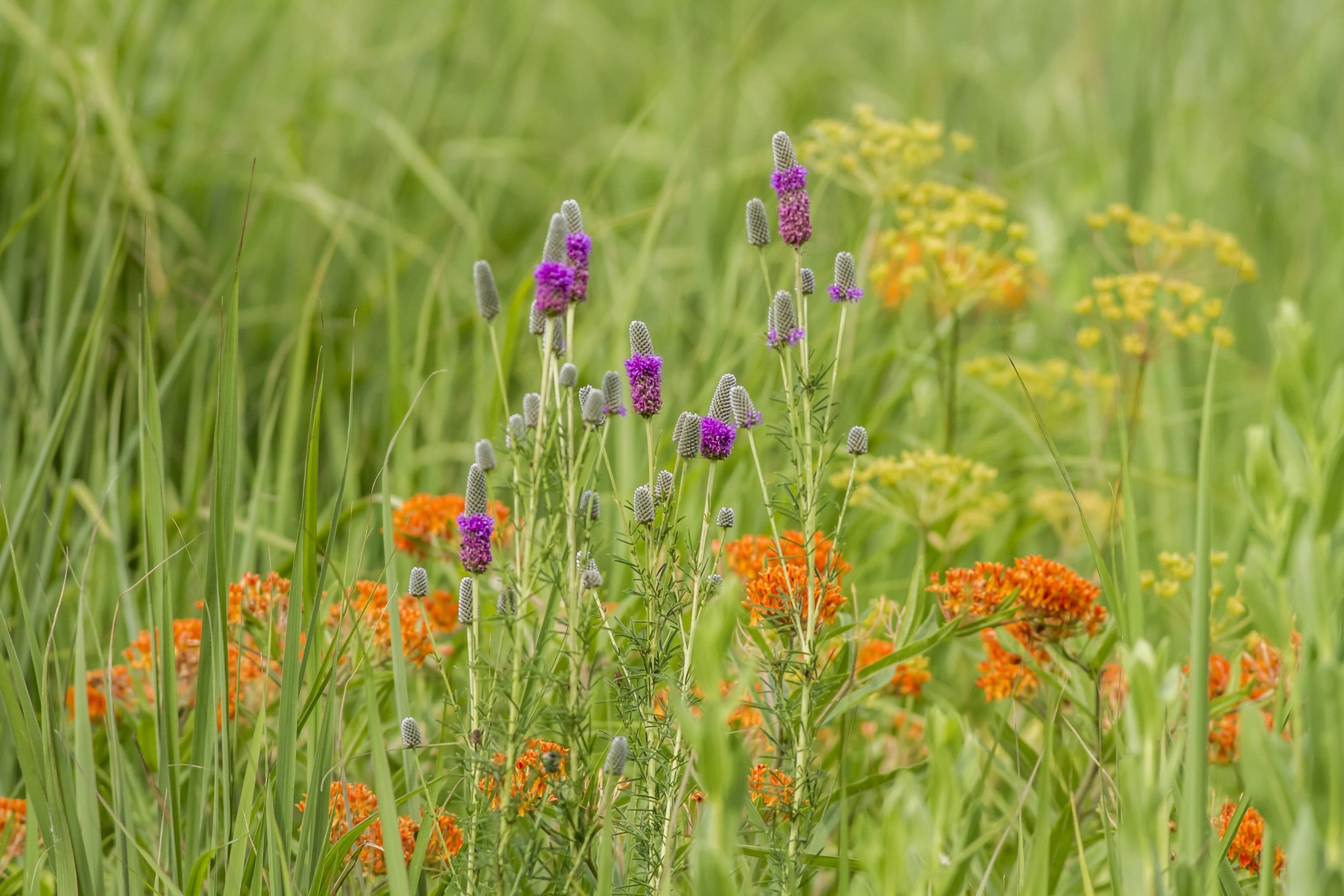By Emily Morris
January 5, 2022
Traditional garden design treats plants as individuals, spaced away from each other to avoid competition between species. In contrast, when we look to the wild as our model, plants live in tightly knit communities, intermingling and evolving into many phases over time. As we learn more about successful gardens and large, designed plantings, we look towards this model of ecology to guide and inform the re-creation of nature within our urban/suburban spaces. One thought leader in plant ecology proposed a theory that explains the adaptive strategy of plants and how they will act on a given site. This is called the CSR Triangle Theory, conceived by J.P. Grimes, and it has come to inspire a fresh approach to plant design for Tree of Life Landscapes.
What is CSR Theory?
CSR Theory is the understanding that plants’ response to a site depends on differences in stress and disturbance. Stress includes external factors that reduce production such as limited light, water, nutrients, and optimal temperatures. Disturbance refers to partial or complete destruction of the plant due to people, disease, animals, or weather events (wind damage, drought, fire, erosion, grazing, construction, etc). The CSR triangle places plants into three categories based on their tolerance to stress and disturbance, and they can be defined as competitors, stress-tolerators, and ruderals (CSR).
COMPETITORS are perennials that tend to take over where there is little stress or disturbance. They spread and often form large clumps, and they thrive by hogging resources. Competitors tend to occupy a mature garden.
STRESS-TOLERATORS have survival adaptations for stressful, variable, or deteriorating site conditions like inconsistent light or water availability. They are meant to fill in where competitors can’t survive and are typically perennials. They thrive in high stress, low disturbance sites and tend to be slow-growers since resource use is conserved and directed towards establishing a few mature plants in a constrained environment.
RUDERALS have short lifespans and are typically annual or biennial species. They thrive in low stress, high disturbance sites and are known to rapidly produce and spread seed. Ruderals transition throughout the garden as life cycles end and quickly begin again from dispersed seed. These plants tend to dominate a plant community in its early stages after a large disturbance. Over time the garden will move towards stress-tolerator and competitor plants.
While these three categories are helpful tools, it is rare that a plant will fall neatly into a single category. For example, many weeds can be classified as competitive ruderals and grow where other competitors cannot survive due to disturbance. Here is an example of plants placed on Grime’s Triangle from an article titled A global method for calculating plant CSR ecological strategies applied across biomes world-wide by Simon Pierce et al.
How to approach planting in Colorado with the CSR theory
For starters, by observing your environmental factors and the habits of plants in your garden, you can create your own Grime’s Triangle. Have you amended your soil, and do you water regularly on an automatic system? This is a great environment for competitors. Did you recently renovate your backyard to create a clean slate for design and gardening? Ruderals will love it here. Do you plan on watering minimally with a temporary irrigation system in unamended soil? Stress tolerators will thrive. When creating a plant community design, we utilize all three categories to create a garden that contains beauty in all of its stages of succession.
In our hybrid seeding approach, we use seeds from competitors, stress tolerators, and ruderals, as well as plugs and one gallon pots to create stability, rhythm, legibility, and to set the stage for the garden’s evolution over the years. The annual seeds are an important element of this approach because they create immediate impact and will seed themselves into open spaces in the garden. Eventually, the competitors will take over to create a highly stable plant community.
CSR Theory in the Field
One of our role models in plant theory is landscape architect, Thomas Rainer, who we hosted at last year’s annual conference. Rainer emphasizes stress as an asset to plant communities since it limits the plant palette to species that are well-adapted to site conditions. In his book, Planting in a Post-Wild World, which was co-authored by Claudia West, the authors state, “The irony is that what we perceive as happy, well-adjusted plants is more often the result of a scarcity of resources rather than an abundance of it,” referring to successful adaptive strategies of plants and their ability to work with limited resources. When Rainer and West design plant communities, they understand that plants’ competitive strategies must be compatible in order for the planting to succeed, though this doesn’t indicate placing plants far apart to avoid competition. In fact, they design in lateral, vertical, and temporal layers, meaning that both the root systems and stems grow in differing width, height and time layers, and all should be filled in and accounted for. As an example from their book, the authors state that “even low plants like sporobolus heterolepis benefit from being under-planted with creeping plants like barren strawberry.” The fuller the garden, the less room weeds have to grow.
One of the many connecting factors between the Rainer/Wes, Grimes, and Tree of Life approaches to garden design is that an ecological stewardship rather than maintenance approach is key. By managing the community, rather than the individual plants, the most time consuming tasks like watering, mulching, mowing, pruning, and leaf removal can be eliminated. We’ll be exploring more of these ideas in our upcoming conference with Denver Botanic Gardens horticulturist, Kevin Williams, as we take a closer look at creating plant communities from seed. Please join us for the conference in March. We’ll be announcing more details soon!



